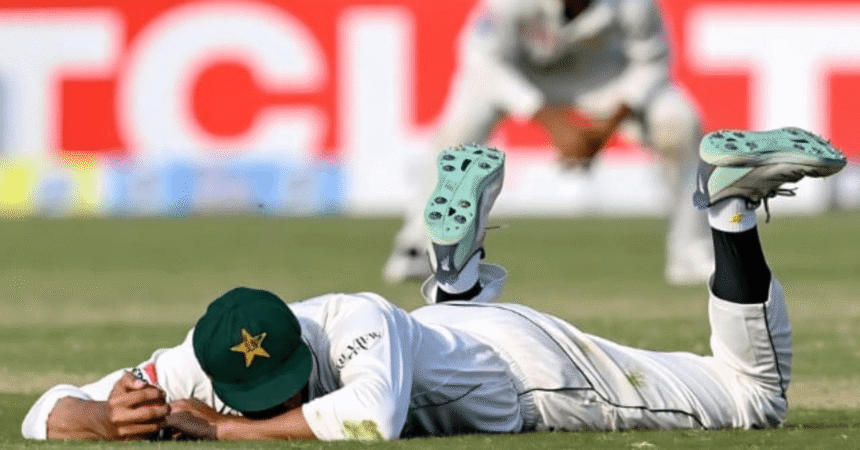Over the past few years, Pakistan cricket has experienced both unprecedented success and profound challenges. While recent accolades for its players have created a façade of achievement, a deeper look reveals a carefully orchestrated plan aimed at dismantling the very fabric of the sport in the country. This article examines the strategic maneuvers behind the low point of Pakistan cricket, particularly from January 2021 to December 2022.
The Resurgence: A Brief Overview
In early 2021, Pakistan cricket was on a resurgence path. Ehsan Mani, who became Chairman of the Pakistan Cricket Board (PCB) in 2018, along with Wasim Khan as CEO, worked diligently to bring international cricket back to the country. Their efforts led to significant tours from SENA (South Africa, England, New Zealand, and Australia) nations after nearly two decades of isolation. From January 2021 to December 2022, Pakistan successfully hosted these teams, marking a critical turning point in restoring its cricketing stature.
Players like Shaheen Afridi and Babar Azam began collecting prestigious ICC awards, showcasing the talents of a new generation. Afridi was awarded the ICC Cricketer of the Year in 2021, while Babar secured the same accolade in 2022. Notably, Babar became the first Pakistani to win the ICC ODI Cricketer of the Year award consecutively. In addition, Mohammad Rizwan and others claimed accolades across formats, culminating in a notable performance that saw Pakistan reach the T20 World Cup final in Australia.
The Machinations of Sabotage
While this period of success might have seemed promising, it was, in fact, the precursor to a well-orchestrated plan aimed at destabilizing Pakistan cricket. Samir, a fictional character in a satirical conversation with Uncle Tom, outlines a strategy designed to bring down the structure of the PCB and its team. Their dialogue reveals a multifaceted approach focused on division, chaos, and mismanagement.
Leadership Instability
The plan began with the dismissal of key figures. Ehsan Mani’s tenure ended, and Wasim Khan resigned before completing his contract. This leadership vacuum allowed Ramiz Raja to step in as chairman, but his time was short-lived. The strategy called for political puppets to replace leaders, undermining the stability and continuity required for a robust cricketing framework. These changes in leadership were designed to dismantle the groundwork laid by Mani and Khan.
Divide and Rule: Creating Discord
One of the core elements of the sabotage strategy was to sow discord among the players. Samir’s plan involved creating conflicts over captaincy and team dynamics. Despite the apparent camaraderie within the team, Samir believed that the lure of leadership and power would lead to infighting. By appointing different captains for isolated series, he aimed to pit players against each other, thus fracturing the unity that had been fostered.
Financial Manipulation
In an effort to destabilize the players’ morale, the strategy included financial manipulation. The plan was to withhold payments, forcing players to compete under financial duress. As Pakistan prepared for the World Cup in India, the intention was to delay contract renewals and refuse No Objection Certificates (NOCs) for players seeking to participate in T20 leagues. This financial strain would contribute to a toxic environment, affecting performance and morale.
Targeting Individual Players
The sabotage extended to individual players as well. Babar Azam, as the face of the team, was singled out for character assassination. Allegations of corruption and match-fixing were to be promoted by various quarters, including former cricketers turned commentators. By vilifying the team’s stars, the plan aimed to erode public support and confidence, effectively turning heroes into villains.
Coaching Chaos
The coaching setup was another target. The strategy involved constant changes in coaching staff, leading to confusion and instability within the team. By introducing a rotating cast of coaches—both foreign and local—the players would face challenges in adapting to different philosophies and styles. This would create a lack of cohesion and undermine the team’s performance on the field.
The PSL Dilemma
Another area of concern was the Pakistan Super League (PSL), a successful T20 league that has gained popularity both domestically and internationally. The plan aimed to introduce rival leagues, undermining the PSL’s financial stability and fan base. By diluting the product and creating confusion in the market, the goal was to diminish the league’s prominence in the cricketing world.
The Role of Politics
Underlying all these maneuvers was a complex web of political influence. The PCB has often been susceptible to political interference, and Samir’s strategy capitalized on this vulnerability. By installing political allies in key positions, the plan aimed to ensure that decisions would be made with little regard for the sport’s integrity. The vision was to create an environment where cricket was viewed through a political lens rather than a sporting one.
The Future of Pakistan Cricket
The current state of Pakistan cricket serves as a cautionary tale of how success can be fleeting and how quickly a thriving ecosystem can be dismantled. The combination of leadership instability, player discord, financial manipulation, targeted attacks on key individuals, chaotic coaching structures, and political interference has left the cricketing landscape in disarray.
The Path Forward
Rebuilding Pakistan cricket will require concerted efforts from all stakeholders. The PCB must prioritize creating a stable leadership structure, fostering player unity, and developing long-term strategies to revitalize the game in the country. Strengthening the domestic circuit and enhancing player welfare will be vital components of this rebuilding process.
The successes of recent years should not be forgotten, but they should serve as a foundation for future growth rather than a false sense of security. Pakistan cricket has the potential to reclaim its place among the elite, but it will need to overcome significant challenges to do so.
The Power of the Fans
Ultimately, the fans play a crucial role in the resurgence of Pakistan cricket. Their unwavering support can help restore faith in the team and its leaders. A united front from fans can create a pressure environment that holds the PCB accountable for its decisions and actions.
The narrative surrounding Pakistan cricket is complex, filled with triumphs and tribulations. While recent accolades may have provided a temporary boost, the underlying strategies aimed at its downfall reveal a more troubling reality. The journey to reclaiming Pakistan cricket’s glory will be challenging, but with the right leadership, a united team, and passionate support from fans, there remains hope for a brighter future.
#PakistanCricket #Cricket #PCB #BabarAzam #ShaheenAfridi #PSL #CricketPolitics #SportsManagement #ICC







